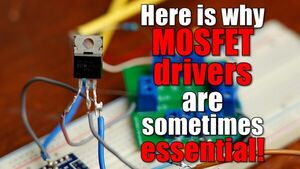2021-10-21 - Nº 338
Editorial
Esta é a Newsletter Nº 338 que se apresenta com o mesmo formato que as anteriores. Se gostar da Newsletter partilhe-a!
Todas as Newsletters encontram-se indexadas no link.
Esta Newsletter tem os seguintes tópicos:
Faz hoje anos que nascia, em 1823, o matemático italiano Enrico Betti. Ele destacou-se pelas suas contribuições em álgebra e topologia. O seu trabalho inicial é na área das equações e álgebra. Escreveu a primeira exposição rigorosa da teoria das equações, anteriormente dada sem provas, desenvolvida pelo notável matemático francês Évariste Galois (1811-32). Betti estendeu e deu provas relacionadas com os conceitos algébricos de Galois, publicadas em várias obras de 1851. Betti deu assim um importante contributo para a transição da álgebra clássica para a moderna. Ele foi o primeiro a dar uma prova de que o grupo Galois está fechado sob multiplicação. Betti também escreveu uma memória pioneira sobre topologia, o estudo das superfícies e do espaço. Betti fez um trabalho importante em física teórica, em particular em teoria e elasticidade potenciais.
Faz também hoje anos que nascia, em 1833, o químico e inventor sueco Alfred Nobel. Ele inventou a dinamite e outros explosivos mais poderosos. Perito em explosivos como o seu pai, em 1866 inventou uma forma segura e controlável de nitroglicerina a que chamou dinamite, e mais tarde, pólvora sem fumo e (1875) gelignite. Ajudou a criar um império industrial, fabricando muitas das suas outras invenções. O Nobel acumulou uma enorme fortuna, grande parte da qual deixou num fundo para dotar os prémios anuais que levam o seu nome. Concedidos pela primeira vez em 1901, estes prémios eram para realizações nas áreas da física, química, fisiologia ou medicina, literatura, e paz. O sexto prémio, de economia, foi instituído em sua honra em 1969.
Por fim, faz hoje anos que nascia, em 1914, o físico e engenheiro norte-americano Samuel W. Alderson. Ele inventou o boneco de teste de colisão utilizado para testar a segurança de automóveis, pára-quedas e outros dispositivos. Desde a década de 1930, quando a segurança dos carros durante um acidente era testada, tinham sido utilizados cadáveres. Quando fundou uma empresa em 1952, Alderson Research Laboratories, que concebeu um manequim antropomórfico, a primeira aplicação foi para testar bancos de ejecção de jactos. Em 1968, produziu um manequim (chamado V.I.P.) construído especificamente para testes automóveis com instrumentos incorporados para a recolha de dados. Tinha juntas articuladas com dimensões e distribuição de peso como um homem adulto médio. Mais tarde, a sua empresa fez também fantasmas médicos para simulações, tais como feridas sintéticas que escorriam sangue falso.
Em 1915 foi feita a primeira comunicação experimental de fala por radiotelefonia transatlântica. Aproveitando os transmissores e receptores de tubos de vácuo recentemente desenvolvidos, a AT&T realizou testes de radiotelefonia da NAA, a estação da Marinha dos EUA em Arlington. B. Webb da AT&T em Arlington, VA.Virginia fala com o tenente-coronel Ferries do governo francês utilizando pontos de retransmissão no Canadá e na Torre Eiffel em Paris. A sua voz foi ouvida tão longe como Honolulu, HI., o que mostrou claramente o quão avançado estava o equipamento de tubos de vácuo, desde o "um pouco mais de 10 milhas" (16-km) de alcance dos inovadores testes do alternador-transmissor de Fessenden (1906). O Presidente Vail anunciou que a AT&T estava a planear acrescentar ligações radiotelefónicas ao sistema Bell.
Em 2011, a Conferência Geral sobre Pesos e Medidas (CGPM) em Sèvres, França, considerou uma resolução para considerar a futura revisão da definição de unidades SI. Esta ainda necessitava de aprovação final, e a sua implementação não seria antes de 2014. No "Novo SI", uma formulação "explícita-constante" aplicar-se-ia a quatro das unidades de base do SI. Assim, o quilograma, o ampere, o kelvin e o mole seriam redefinidos em termos de invariantes da natureza; as novas definições serão baseadas em valores numéricos fixos da constante de Planck (h), da carga elementar (e), da constante de Boltzmann (k), e da constante de Avogadro (NA), respectivamente. Mais notavelmente, pela primeira vez, o quilograma deixaria de ser definido pelo protótipo internacional, um objecto metálico específico e a sua possível variação subtil na massa.
Nesta semana que passou a nave Shenzhou-13 transportou para a a estação espacial Tiangong três astronautas chineses. Dois homens e uma mulher irão ficar na estação durante cerca de seis meses. Um dos objectivos da missão é testar a capacidade dos astronautas e das instalações durante uma estadia longa. Vão também conduzir diversas experiências cientificas com um braço robótico que será instalado numa das caminhadas no espaço previstas. A estação espacial Tiangong vai pesar cerca de 70 toneladas, após estar concluída, e deverá funcionar durante 15 anos, orbitando a cerca de 400 quilómetros acima da superfície da Terra.
Na Newsletter desta semana apresentamos diversas noticias, artigos científicos, projetos de maker assim como alguns videos interessantes. É apresentada a revista Hackspace Magazine nº48 de Novembro.
 João Alves ([email protected])
João Alves ([email protected])
O conteúdo da Newsletter encontra-se sob a licença  Creative Commons Attribution-NonCommercial-ShareAlike 4.0 International License.
Creative Commons Attribution-NonCommercial-ShareAlike 4.0 International License.
Novidades da Semana

China launches Shenzhou 13 astronauts on their Tiangong space station mission
"China’s Shenzhou 13 spacecraft left Earth at 12.24am on Saturday, taking its three-person crew – including the country’s second female astronaut – to spend the next six months assembling the Tiangong space station. The craft blasted off from the Jiuquan satellite launch centre in the Gobi Desert in northern China and is expected to arrive at the station’s Tianhe core module – 400km (248 miles) – after a journey of six and a half hours. On board are Wang Yaping, 41, who will be the first woman to set foot on the Tianhe, and her fellow astronauts Zhai Zhigang, 55, and Ye Guangfu, 41. Their six months in orbit will double the record set by their predecessors last summer. Zhai, the most senior of the trio, has been designated mission commander while Ye will be making his maiden space flight. All three previously served as the backup crew for the recently completed Shenzhou 12 mission." [...]
Outras Notícias
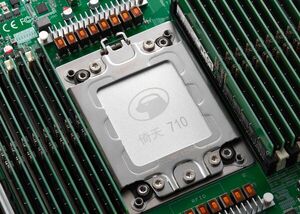
Alibaba Cloud Unveils New Server Chips to Optimize Cloud Computing Services
"Alibaba Cloud, the digital technology and intelligence backbone of Alibaba Group, today unveiled a new in-house processor design for use in its data centers. The server chips, named Yitian 710, are custom-built by Alibaba Group’s chip development business, T-Head. Powered by these chips, Alibaba Cloud also announced the development of its proprietary servers, called Panjiu. The combination is set to enhance the company’s leading cloud services by optimizing computing performance and energy efficiency. “Customizing our own server chips is consistent with our ongoing efforts toward boosting our computing capabilities with better performance and improved energy efficiency,” said Jeff Zhang, President of Alibaba Cloud Intelligence and Head of Alibaba DAMO Academy during the Apsara Conference, Alibaba’s annual technology flagship event. “We plan to use the chips to support current and future businesses across the Alibaba Group ecosystem." [...]

Meet the Raspberry Pi Build HAT: create with Raspberry Pi and LEGO® Education
"Today we have huge smiles on our faces as we announce the Raspberry Pi Build HAT, a brand-new product that for the first time makes it easy to integrate LEGO® Technic™ motors and sensors with Raspberry Pi computers. We’ve designed it to enable fun and creative learning experiences for young people, teachers, and makers. Raspberry Pi Build HAT The Build HAT is part of an exciting new collaboration between Raspberry Pi and LEGO® Education to increase the impact and reach of STEAM learning. We’re really thrilled about the possibilities this new team-up will bring, as is the LEGO Education team. “We are excited to work with Raspberry Pi to provide tools for students, teachers and makers all over the world to expand their creative digital skills and discover hands-on learning experiences,” said Andrew Sliwinski, Head of Product Experience, LEGO Education. Raspberry Pi meets LEGO® Education The Build HAT (Hardware Attached on Top), priced at $25, is a new add-on board for your Raspberry Pi. It connects to the 40-pin GPIO header and can be used to control up to four LEGO® Technic™ motors and sensors from the LEGO® Education SPIKE™ Portfolio." [...]

Toshiba Releases New M4N Group of Arm® Cortex®-M4 Microcontrollers in the TXZ+TM Family Advanced Class
"Optimized for IoT devices, equipped with Ethernet and CAN controller Toshiba Electronic Devices & Storage Corporation ("Toshiba") has started mass production of 20 new microcontrollers in the M4N group as new products in the TXZ+™ Family Advanced Class manufactured in a 40nm process. The M4N group includes an Arm Cortex-M4 core with FPU, running up to 200MHz, with an integrated maximum 2MB code flash and 32KB data flash memory with maximum 100K write cycle endurance. These microcontrollers also offer various interface and communications options, such as Ethernet, CAN and USB 2.0 FS OTG controller with integrated PHY. M4N group devices are suited for office equipment, building and factory automation, and Industrial networking and information management devices. The new M4N group products have enhanced communications functions integrated as a serial memory interface that also supports Quad/Octal SPI, an audio interface (I2S), and an external bus interface, in addition to UART, FUART, TSPI, and I2C, which are supported by a built-in 3-unit DMAC. Moreover, the devices can allocate independent DMA and RAM for each peripheral circuit, and use a bus matrix circuit configuration that ensures efficient data transfers by the bus master." [...]

New ISO 26262 Functional Safety Packages Simplify Design of ASIL B and ASIL C Safety Applications Using dsPIC®, PIC18 and AVR® Microcontrollers
"Certified functional safety solution from Microchip accelerates the development and certification of automotive safety applications CHANDLER, Ariz., Oct. 20, 2021 — Safety is a primary concern in automotive applications to ensure reliable operation and end users’ wellbeing. Microchip Technology Inc. (Nasdaq: MCHP) is offering newly certified functional safety packages to enable engineers to develop their products as per the ISO 26262 functional safety standard. Microchip is announcing the release of ISO 26262 functional safety packages for dsPIC33C digital signal controllers (DSCs), PIC18 and AVR microcontrollers (MCUs) that accelerate the development of safety-critical designs targeting ASIL B and ASIL C safety level and certification efforts. The complete functional safety ecosystem for dsPIC33C DSCs includes: - AEC Q100 Grade 0-qualified functional safety ready dsPIC33C DSCs with dedicated hardware safety features - SGS TÜV Saar-certified ASIL B Ready Failure Modes, Effects and Diagnostic Analysis (FMEDA) report and Functional Safety Manual (FSM) - TÜV Rheinland-certified functional safety diagnostic libraries for designs targeting up to ASIL C - A functional safety reference application, showing the steps required to develop compliant designs, and the collateral that must be generated for (ASIL B or ASIL C) compliance - Various functional safety analysis reports and certification reports that help ease compliance and certification The complete functional safety ecosystem for PIC18 and AVR MCUs includes: - AEC Q100 Grade 1-qualified functional safety ready PIC18-Q84 MCUs with CAN FD and AVR DA MCUs with LIN interfaces, both with hardware support for capacitive touch sensors - SGS TÜV Saar-certified ASIL B Ready Failure Modes, Effects and Diagnostic Analysis (FMEDA) report and Functional Safety Manual (FSM) - Functional safety diagnostic libraries - ASIL B Ready certificates and certification reports to help ease compliance and certification Whether an engineer is new to ISO 26262 functional safety or a seasoned expert, Microchip has proven experience and solutions to help them meet functional safety requirements and certify designs while minimizing cost, risk and development time. The functional safety packages listed below, together with our development tools that come with the safety documents, allow engineers to develop compliant systems. Microchip is offering three ISO 26262 functional safety packages for purchase to help customers with different levels of expertise and in different stages of their evaluation and design cycles: The functional safety basic package offers basic resources like the ASIL B Ready certified FMEDA and Safety Manual for customers to get started with the evaluation of target functional safety levels and the design of safety-critical automotive applications." [...]

Renesas Announces Development of Next-Generation Wireless MCUs Supporting New Bluetooth® 5.3 Low Energy Specification
"Part of Renesas’ RA Family of MCUs, New Devices Slated to Sample in Q1 2022 Renesas Electronics Corporation (TSE:6723), a premier supplier of advanced semiconductor solutions, today announced that it is developing new microcontrollers (MCUs) that will support the recently released Bluetooth® 5.3 Low Energy (LE) Specification. The new devices will be part of the Renesas Advanced (RA) Family of 32-bit Arm® Cortex®-M microcontrollers, joining the RA4W1 Bluetooth 5.0 LE device introduced last year. Renesas expects to have first samples of the new MCUs in the first quarter of 2022. The new Bluetooth 5.3 specification was released on July 13, 2021. It includes important new features, such as allowing receivers to filter out messages without involving the host stack to improve the receiver duty cycle. It also enables peripheral devices to provide preferred channels to a central device in order to improve throughput and reliability." [...]

Qualcomm Announces New RF Filter Technology to Enable Next Generation 5G and Wi-Fi Solutions
"Qualcomm Technologies, Inc., today announced the Qualcomm® ultraBAW RF filter technology for bands up to 7 GHz, another innovation that builds on the company’s modem-to-antenna solution that is driving high-performance 5G and connectivity systems across wireless product segments. Radio frequency (RF) filters isolate radio signals from the different spectrum bands that phones use to receive and transmit information. The new Qualcomm ultraBAW RF filter technology will enable both 5G and Wi-Fi solutions to access spectrum up to 7 GHz, delivering high performance at higher frequencies. Access to sub-7 GHz spectrum will enable next-generation mobile devices, laptops, as well as numerous solutions for Automotive, IoT, and industrial applications to benefit from 5G and Wi-Fi co-existence, leading to enhanced performance and power efficiency indoors and outdoors. Why It’s Important: The new Qualcomm ultraBAW RF filter extends and expands the leading edge performance of our previously announced Qualcomm® ultraSAW technology. While Qualcomm ultraSAW covers low-band frequencies from 600 MHz to 2.7 GHz, the Qualcomm ultraBAW covers the range from 2.7 to 7.2 GHz, expanding mid-band connectivity up to sub-7 GHz." [...]
Ciência e Tecnologia

New Technique Paves the Way for Perfect Perovskites
"Next-gen solar material could outshine other solar cells An exciting new solar material called organic-inorganic halide perovskites could one day help the U.S. achieve its solar ambitions and decarbonize the power grid. One thousand times thinner than silicon, perovskite solar materials can be tuned to respond to different colors of the solar spectrum simply by altering their composition mix. Typically fabricated from organic molecules such as methylammonium and inorganic metal halides such as lead iodide, hybrid perovskite solar materials have a high tolerance for defects in their molecular structure and absorb visible light more efficiently than silicon, the solar industry’s standard. Altogether, these qualities make perovskites promising active layers not only in photovoltaics (technologies that convert light into electricity), but also in other types of electronic devices that respond to or control light including light-emitting diodes (LEDs), detectors, and lasers. But “although perovskites offer great potential for greatly expanding solar power, they have yet to be commercialized because their reliable synthesis and long-term stability has long challenged scientists,” said Carolin Sutter-Fella, a scientist at the Molecular Foundry, a nanoscience user facility at Lawrence Berkeley National Laboratory (Berkeley Lab). “Now, a path to perfect perovskites may soon be within reach.” A recent Nature Communications study co-led by Sutter-Fella reports that solar materials manufacturing could be aided by a sophisticated new instrument that uses two types of light – invisible X-ray light and visible laser light – to probe a perovskite material’s crystal structure and optical properties as it is synthesized." [...]

NUS researchers develop world’s first smart bandage that detects multiple biomarkers for onsite chronic wound monitoring
"A research team led by Professor Lim Chwee Teck from the National University of Singapore’s (NUS) Department of Biomedical Engineering and Institute for Health Innovation & Technology (iHealthtech), in collaboration with clinical partners from Singapore General Hospital, has developed a smart wearable sensor that can conduct real-time, point-of-care assessment of chronic wounds wirelessly via an app. A world’s first, the novel sensor technology can detect temperature, pH, bacteria type and inflammatory factors specific to chronic wounds within 15 minutes, hence enabling fast and accurate wound assessment. With a rapidly ageing population, healthcare providers are seeing more patients suffering from non-healing wounds such as diabetic foot and chronic venous leg ulcers. It has been estimated that about two per cent of the world’s population suffer from chronic wounds. The healing processes for these chronic wounds are often interrupted due to reasons such as infection and repeated trauma, leading to severe stress, pain and discomfort to afflicted patients. For patients with diabetic foot ulcers, this can lead to more severe outcomes such as foot amputation." [...]
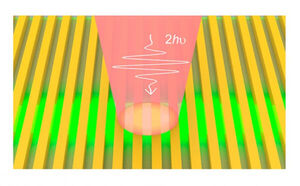
ITMO Scientists Enhance Multiphoton Processes in Perovskite Metasurfaces
"Researchers placed a polymer on a thin perovskite film and, using lithography, created a metasurface consisting of prolonged parallelepipeds. In the future, this will help create highly efficient visualizers for infrared radiation. Multiphoton absorption and luminescence are important nonlinear processes used for efficient light-matter interaction. Resonant enhancement of nonlinear processes has been demonstrated for many nanostructures. However, it’s believed that all higher-order processes are always much weaker than their corresponding linear processes. A research team from ITMO University’s School of Physics and Engineering together with their colleagues from Harbin Institute of Technology (China) and the Australian National University proved that two-photon luminescence can be compared to one-photon luminescence." [...]
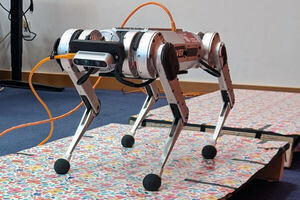
One giant leap for the mini cheetah
"A new control system, demonstrated using MIT’s robotic mini cheetah, enables four-legged robots to jump across uneven terrain in real-time. A loping cheetah dashes across a rolling field, bounding over sudden gaps in the rugged terrain. The movement may look effortless, but getting a robot to move this way is an altogether different prospect. In recent years, four-legged robots inspired by the movement of cheetahs and other animals have made great leaps forward, yet they still lag behind their mammalian counterparts when it comes to traveling across a landscape with rapid elevation changes. “In those settings, you need to use vision in order to avoid failure. For example, stepping in a gap is difficult to avoid if you can’t see it." [...]

Researchers Observe Enhanced Bulk Photovoltaic Effect in 2D Ferroelectric Material
"Bulk photovoltaic effect (BPVE) is widely used in generating electricity. As a process of energy transference from photons to electrons and of voltage formation within ferroelectric material, BPVE acts like a dam, raising up "water" (voltage) to generate "power" (electric currents). Researchers have realized high photovoltage beyond theoretical Shockley-Queisser (SQ) limit in previous studies, however, the density of photocurrent generated through conventional methods remains relatively low. In a study published in Nature Communications, a research team led by Prof. ZENG Hualing and Prof. GONG Ming from the University of Science and Technology of China (USTC) realized remarkable photocurrent density in a two-dimensional (2D) material CuInP2S6 (CIPS) with layered van der Waals (vdW) structure. They achieved measurable control over the magnitude of BPVE under the condition of applied electric field, incident light field as well as temperature field. Based on characteristic of the atomic thickness of layered ferroelectric material and the weak vdW force between layers, researchers constructed a vertical structure by combining graphene with a couple of layers of CIPS." [...]
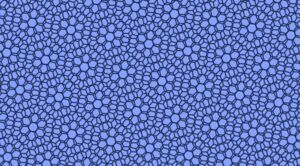
Graphene’s Magic Act Relies on a Small Twist
"Carbon is not the shiniest element, nor the most reactive, nor the rarest. But it is one of the most versatile. Carbon is the backbone of life on earth and the fossil fuels that have resulted from the demise of ancient life. Carbon is the essential ingredient for turning iron into steel, which underlies technologies from medieval swords to skyscrapers and submarines. And strong, lightweight carbon fibers are used in cars, planes and windmills. Even just carbon on its own is extraordinarily adaptable: It is the only ingredient in (among other things) diamonds, buckyballs(link is external) and graphite(link is external) (the stuff used to make pencil lead)." [...]
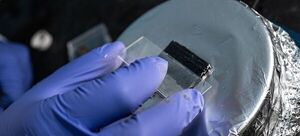
Anticorrosion coating sets new benchmark
"Rice engineers develop flexible, self-healing material to protect steel from the elements. An insulator of sulfur and selenium made with flexible devices in mind may have found its true destiny: As an anticorrosive coating for steel. The compound developed by the Rice University lab of materials scientist Pulickel Ajayan proved itself more dielectric (insulating) than most flexible materials and more flexible than most dielectrics, making it a good candidate for components in electronics like bendable cellphones. At the same time, the material had its creators thinking: What else can it do? “Even before we reported on the material for the first time, we were looking for more applications,” said materials scientist Muhammad Rahman, principal investigator on the study and an assistant research professor of materials science and nanoengineering in the George R. Brown School of Engineering. “So we thought, let’s put it in salt water and see what happens,” he said." [...]

Quantum material to boost terahertz frequencies
"New study elucidates fundamental enigma of topological insulators They are regarded as one of the most interesting materials for future electronics: Topological insulators conduct electricity in a special way and hold the promise of novel circuits and faster mobile communications. Under the leadership of the Helmholtz-Zentrum Dresden-Rossendorf (HZDR), a research team from Germany, Spain and Russia has now unravelled a fundamental property of this new class of materials: How exactly do the electrons in the material respond when they are “startled” by short pulses of so-called terahertz radiation? The results are not just significant for our basic understanding of this novel quantum material, but could herald faster mobile data communication or high-sensitivity detector systems for exploring distant worlds in years to come, the team reports in NPJ Quantum Materials (DOI: 10.1038/s41535-021-00384-9). Topological insulators are a very recent class of materials which have a special quantum property: on their surface they can conduct electricity almost loss-free while their interior functions as an insulator – no current can flow there. Looking to the future, this opens up interesting prospects: Topological insulators could form the basis for high efficiency electronic components, which makes them an interesting research field for physicists. But a number of fundamental questions are still unanswered." [...]
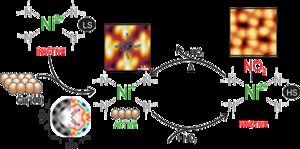
Molecular interfaces for innovative sensors and data storage devices
"Molecular interfaces formed between metals and molecular compounds have enormous potential as building blocks for future opto-electronics and spin-electronics devices. Transition metal phthalocyanine and porphyrin complexes are promising components for such interfaces. Scientists at Forschungszentrum Jülich, together with a team of international scientists, have been working to develop a model system for designing such devices with unique functions and enhanced performance by stabilizing and controlling the spin and oxidation states in the complexes with nanoscale precision. Among other things, they discovered a mechanism that can be used in the future to store information in porphyrins or to develop extremely sensitive sensors to detect toxic nitrogen dioxide. Some of the most important processes in biological systems are catalyzed by enzymes containing metal ions, where unexpected reactivity corresponds to low oxidation states. For example, porphyrins, a class of dye molecules, are involved in photosynthesis in plants and oxygen transport in red blood cells." [...]
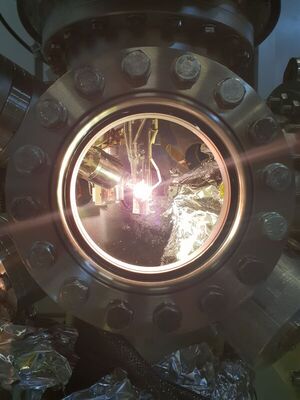
Ultrafast magnetism: heating magnets, freezing time
"Magnetic solids can be demagnetized quickly with a short laser pulse, and there are already so-called HAMR (Heat Assisted Magnetic Recording) memories on the market that function according to this principle. However, the microscopic mechanisms of ultrafast demagnetization remain unclear. Now, a team at HZB has developed a new method at BESSY II to quantify one of these mechanisms and applied it to the rare-earth element Gadolinium, whose magnetic properties are caused by electrons on both the 4f and the 5d shells. This study is completing a series of experiments done by the team on Nickel, Iron-Nickel Alloys. Understanding these mechanisms is useful for developing ultrafast data storage devices. New materials should make information processing more efficient, for example, through ultrafast spintronic devices that store data with less energy input." [...]

New fibers can make breath-regulating garments
"A new kind of fiber developed by researchers at MIT and in Sweden can be made into clothing that senses how much it is being stretched or compressed, and then provides immediate tactile feedback in the form of pressure, lateral stretch, or vibration. Such fabrics, the team suggests, could be used in garments that help train singers or athletes to better control their breathing, or that help patients recovering from disease or surgery to recover their breathing patterns. The multilayered fibers contain a fluid channel in the center, which can be activated by a fluidic system. This system controls the fibers’ geometry by pressurizing and releasing a fluid medium, such as compressed air or water, into the channel, allowing the fiber to act as an artificial muscle. The fibers also contain stretchable sensors that can detect and measure the degree of stretching of the fibers. The resulting composite fibers are thin and flexible enough to be sewn, woven, or knitted using standard commercial machines." [...]
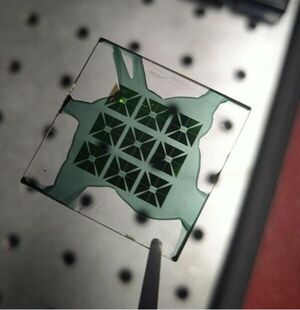
Bridging optics and electronics
"New spatial light modulator marries optical and electronic realms Spatial light modulators are common optical components found in everything from home theater projectors to cutting-edge laser imaging and optical computing. These components can control various aspects of a light, such as intensity or and phase , pixel by pixel. Most spatial light modulators today rely on mechanical moving parts to achieve this control but that approach results in bulky and slow optical devices. Now, researchers at the Harvard John A. Paulson School of Engineering and Applied Sciences, in collaboration with a team from Washington University, have developed a simple spatial light modulator made from gold electrodes covered by a thin film of electro-optical material that changes its optical properties in response to electric signals. This is a first step towards more compact, high-speed and precise spatial light modulators that could one day be used in everything from imaging to virtual reality, quantum communications and sensing. The research is published in Nature Communications." [...]
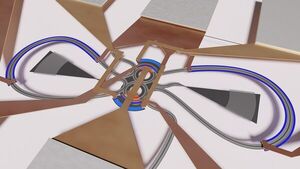
Frequency Translating Add/Drop Filters Designed for On-Chip Light Manipulation
"Researchers report the development of frequency translating add/drop filters based on electro-optically modulated photonic molecules. The new class of filters could open important new avenues for on-chip light manipulation. Hayk Gevorgyan from Boston University, USA will present the research at the Frontiers in Optics + Laser Science Conference (FiO LS) all-virtual meeting, 01– 04 November 2021. Gevorgyan’s presentation is scheduled for Tuesday, 02 November at 16:30 EDT (UTC – 04:00). Add/drop filters are used to add and/or drop an individual light channel without disturbing other channels. These filters are commonly used in optical data communication, but are also important for quantum information processing, optical neural networks and other applications." [...]

Ultrafast optical switching can save overwhelmed datacenters
"EPFL and Microsoft Research scientists demonstrated ultrafast optical circuit switching using a chip-based soliton comb laser and a completely passive diffraction grating device. This particular architecture could enable an energy-efficient optical datacenter to meet enormous data bandwidth requirements in future. Services from all hyper-scale cloud providers like Microsoft are powered by massive datacenters that employ hundreds of thousands of servers, whose performance depends heavily on the quality of the network between them. Current datacenter networks include multiple layers of electrical packet switches interconnected through optical fibers. These systems require electrical-to-optical conversion, which increases cost and power overhead. To make things worse, growing data rates due to applications like AI and data analytics could concur with the slowdown of Moore's law which would make it extremely difficult to efficiently scale current network architectures relying on electrical chips." [...]
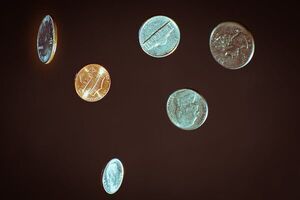
Using Quantum Parrondo’s Random Walks for Encryption
"Assistant Professor Kang Hao Cheong and his research team from the Singapore University of Technology and Design (SUTD) have set out to apply concepts from quantum Parrondo’s paradox in search of a working protocol for semiclassical encryption. In a recent Physical Review Research letter, the team published the paper 'Chaotic switching for quantum coin Parrondo's games with application to encryption' and discovered that chaotic switching for quantum coin Parrondo's games has similar underlying ideas and working dynamics to encryption. Parrondo’s paradox is a phenomenon where the switching of two losing games results in a winning outcome. In the two-sided quantum coin tossing game introduced by the authors, they showed in a previous work that random and certain periodic tossing of two quantum coins can turn a quantum walker’s expected position from a losing position into a fair and winning position, respectively. In such a game, the quantum walker is given a set of instructions on how to move depending on the outcome of the quantum coin toss. Inspired by the underlying principles of this quantum game, Joel Lai, the lead author of the study from SUTD explained, “Suppose I present to you the outcome of the quantum walker at the end of 100 coin tosses, knowing the initial position, can you tell me the sequence of tosses that lead to this final outcome?” As it turns out, this task can either be very difficult or very easy." [...]

Unmasking the magic of superconductivity in twisted graphene
"The discovery in 2018 of superconductivity in two single-atom-thick layers of graphene stacked at a precise angle of 1.1 degrees (called ‘magic’-angle twisted bilayer graphene) came as a big surprise to the scientific community. Since the discovery, physicists have asked whether magic graphene’s superconductivity can be understood using existing theory, or whether fundamentally new approaches are required – such as those being marshalled to understand the mysterious ceramic compound that superconducts at high temperatures. Now, as reported (link is external)in the journal Nature, Princeton researchers have settled this debate by showing an uncanny resemblance between the superconductivity of magic graphene and that of high temperature superconductors. Magic graphene may hold the key to unlocking new mechanisms of superconductivity, including high temperature superconductivity. Ali Yazdani(link is external), the Class of 1909 Professor of Physics and Director of the Center for Complex Materials at Princeton University(link is external) led the research. He and his team have studied many different types of superconductors over the years and have recently turned their attention to magic bilayer graphene." [...]
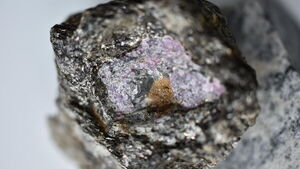
Some of the world’s oldest rubies linked to early life
"Carbon residue that was once ancient life found encased in a 2.5 billion-year-old ruby While analyzing some of the world’s oldest coloured gemstones, researchers from the University of Waterloo discovered carbon residue that was once ancient life, encased in a 2.5 billion-year-old ruby. The research team, led by Chris Yakymchuk, professor of Earth and Environmental Sciences at Waterloo, set out to study the geology of rubies to better understand the conditions necessary for ruby formation. During this research in Greenland, which contains the oldest known deposits of rubies in the world, the team found a ruby sample that contained graphite, a mineral made of pure carbon. Analysis of this carbon indicates that it is a remnant of early life. “The graphite inside this ruby is really unique. It’s the first time we’ve seen evidence of ancient life in ruby-bearing rocks,” says Yakymchuk." [...]

Uncovering the secrets of ultra-low frequency gravitational waves
"New methods of detecting ultra-low frequency gravitational waves can be combined with other, less sensitive measurements to deliver fresh insights into the early development of our universe, according to researchers at the University of Birmingham. Gravitational waves - ripples in the fabric of Einstein's spacetime - that cross the universe at the speed of light have all sorts of wavelengths, or frequencies. Scientists have not yet managed to detect gravitational waves at extremely low ‘nanohertz’ frequencies, but new approaches currently being explored are expected to confirm the first low frequency signals quite soon. The main method uses radio telescopes to detect gravitational waves using pulsars – exotic, dead stars, that send out pulses of radio waves with extraordinary regularity. Researchers at the NANOGrav collaboration, for example, use pulsars to time to exquisite precision the rotation periods of a network, or array, of millisecond pulsars – astronomers’ best approximation of a network of perfect clocks - spread throughout our galaxy. These can be used to measure the fractional changes caused by gravitational waves as they spread through the universe." [...]

Artificial networks learn to smell like the brain
"When asked to classify odors, artificial neural networks adopt a structure that closely resembles that of the brain’s olfactory circuitry. Using machine learning, a computer model can teach itself to smell in just a few minutes. When it does, researchers have found, it builds a neural network that closely mimics the olfactory circuits that animal brains use to process odors. Animals from fruit flies to humans all use essentially the same strategy to process olfactory information in the brain. But neuroscientists who trained an artificial neural network to take on a simple odor classification task were surprised to see it replicate biology’s strategy so faithfully. “The algorithm we use has no resemblance to the actual process of evolution,” says Guangyu Robert Yang, an associate investigator at MIT’s McGovern Institute for Brain Research, who led the work as a postdoc at Columbia University." [...]
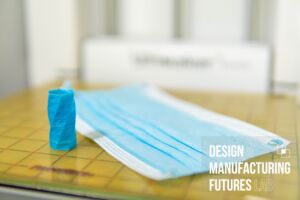
Facemask to Filament: 3D Printing with Recycled Facemasks
"As a first line of defence against the spread of COVID-19 the facemask, a simple covering worn to reduce the spread of infectious agents, has affected the lives of billions across the globe. An estimated 129 billion facemasks are used every month, of which, most are designed for single use. Naturally, this presents a challenge of immense scale to mitigate the impact of disused Personal Protective Equipment (PPE) on our environment. Our lab here at the University of Bristol predominantly focuses on issues concerning Rapid Prototyping. We’ve been involved in numerous ‘hack the pandemic’ type projects since the outbreak of COVID-19, sharing our knowledge of Rapid Prototyping with the maker community at large. As such, our works under the title of Project Clean Access (PCA), a DMF lab initiative funded by the Royal Academy of Engineering, have previously contributed designs for low-cost, physical interventions to reduce the transmission of COVID-19." [...]

Combustion creates braille display for electronics
"Imagine an iPad or a Kindle for the blind, with inflatable braille that changes shape under a user’s touch. A Cornell-led collaboration has made a crucial component for such a technology: a haptic array of densely packed actuators that cause silicone membrane “dots” to pop up when triggered by combustion. The team’s paper, “Valveless Microliter Combustion for Densely Packed Arrays of Powerful Soft Actuators,” published Sept. 28 in Proceedings of the National Academy of Sciences. The lead author is doctoral student Ronald Heisser. One of the major hurdles for designing a dynamic braille display for electronics is figuring out how to apply the necessary amount of force for each dot. Previous attempts have usually involved motors, hydraulics or tethered pumps, all of which are cumbersome, complex and expensive, according to Rob Shepherd, associate professor of mechanical and aerospace engineering in the College of Engineering and the paper’s senior author." [...]
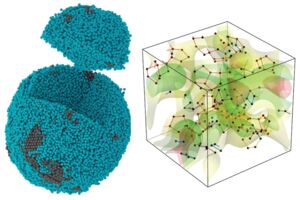
3D imaging study reveals how atoms are packed in amorphous materials
"UCLA-led research could revise a 70-year-old model of how the fundamental building blocks of substances are assembled Experimental 3D atomic image of a tiny, noncrystalline palladium particle (left), in which the 10-sided pentagonal bipyramid (right) is the most prevalent motif for how atoms pack together; the orange lines represent the pentagonal bipyramid shape. (Image credit: Yakun Yuan and John Miao/UCLA). Many substances around us, from table salt and sugar to most metals, are arranged into crystals. Because their molecules are laid out in an orderly, repetitive pattern, much is understood about their structure. However, a far greater number of substances — including rubber, glass and most liquids — lack that fundamental order throughout, making it difficult to determine their molecular structure. To date, understanding of these amorphous substances has been based almost entirely on theoretical models and indirect experiments." [...]

Accelerating the discovery of new materials for 3D printing
"A new machine-learning system costs less, generates less waste, and can be more innovative than manual discovery methods. The growing popularity of 3D printing for manufacturing all sorts of items, from customized medical devices to affordable homes, has created more demand for new 3D printing materials designed for very specific uses. To cut down on the time it takes to discover these new materials, researchers at MIT have developed a data-driven process that uses machine learning to optimize new 3D printing materials with multiple characteristics, like toughness and compression strength. By streamlining materials development, the system lowers costs and lessens the environmental impact by reducing the amount of chemical waste. The machine learning algorithm could also spur innovation by suggesting unique chemical formulations that human intuition might miss. “Materials development is still very much a manual process." [...]

Quantum-Encrypted Information Transmitted Over Fiber More than 600 Kilometers Long
"By implementing a new signal stabilization technique, researchers were able to achieve secure quantum communication over a record 605 kilometers of fiber using the twin-field quantum key distribution (QKD) protocol. The new demonstration paves the way for transmitting highly secure, quantum-encrypted information over long distances, such as between cities. Mirko Pittaluga from Toshiba Europe Limited and the University of Leeds, both in the UK, will present the research at the Frontiers in Optics + Laser Science Conference (FiO LS) all-virtual meeting, 01 – 04 November 2021. Pittaluga’s presentation is scheduled for Monday, 01 November at 07:00 EDT (UTC – 04:00). “This research extends the range of fiber-based quantum communications beyond 600km for the first time, and we think the techniques we have introduced here may be relevant for other phase-sensitive single-photon applications,” said Mirko Pittaluga. “This will allow us to build national and continental scale fibre networks connecting major metropolitan areas." [...]
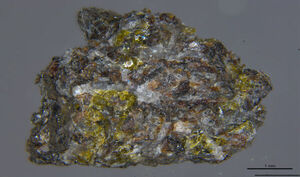
47 Lunar Fragments Help Fill Gap of Two Billion Years in Lunar History
"China's Chang'E-5 lunar sampling mission returned the first lunar samples since the Apollo and Luna missions, the last of which was in 1976. The 3.8 pounds of soil and rocks are the first fresh samples in 45 years, and they are the first samples from a previously unvisited mare basalt. The remnants of this solidified lava flow might be evidence of the Moon's most recent volcanic activity. Researchers aged 47 basalt fragments, ranging in size from a dust particle to the thickness of about 10 pages stacked together, with radiometric dating and found that they were formed roughly 2.03 billion years ago - 800 to 900 million years more recently than the Apollo and Luna samples indicated. The multi-institutional team in China published their results on October 19, 2021, in Nature. "This is the youngest crystallization age ever reported for lunar basaltic rocks by radiometric measurement, extending the range of radio isotopic ages of lunar basalt by 800 to 900 million years," said paper author LI Chunlai, a researcher at the National Astronomical Observatories of the Chinese Academy of Sciences (NAOC)." [...]

Cambridge physicists announce results that boost evidence for new fundamental physics
"Results announced by the LHCb experiment at CERN have revealed further hints for phenomena that cannot be explained by our current theory of fundamental physics. In March 2020, the same experiment released evidence of particles breaking one of the core principles of the Standard Model – our best theory of particles and forces – suggesting the possible existence of new fundamental particles and forces. Now, further measurements by physicists at Cambridge’s Cavendish Laboratory have found similar effects, boosting the case for new physics. The Standard Model describes all the known particles that make up the universe and the forces that they interact through. It has passed every experimental test to date, and yet physicists know it must be incomplete. It does not include the force of gravity, nor can it account for how matter was produced during the Big Bang, and contains no particle that could explain the mysterious dark matter that astronomy tells us is five times more abundant than the stuff that makes up the visible world around us." [...]
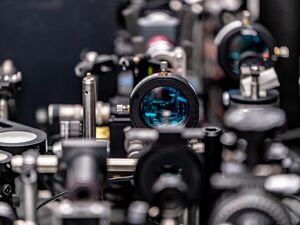
New Optical Switch up to 1000x Faster Than Transistors “Optical accelerator” devices could one day soon turbocharge tailored applications
"A new optical switch is, at 1 trillion operations per second, between 100 and 1,000 times faster than today's leading commercial electronic transistors, research that may one day help lead to a new generation of computers based on light instead of electricity, say scientists in Russia and at IBM. Computers typically represent data as ones and zeroes by switching transistors between one electric state and the other. Optical computers that replace conventional transistors with optical switches could theoretically operate more quickly than regular computers, as photons travel at the speed of light, while electrons, typically, don’t. The new device relies on a 35-nanometer-wide organic semiconductor polymer film sandwiched between two highly reflective mirrors. The result is a microscopic cavity designed to keep incoming light trapped inside for as long as possible to help it couple with the cavity's material. Two lasers help operate the device—a bright pump laser and a very weak seed laser." [...]

New photonic chip for isolating light may be key to miniaturizing quantum devices
"Light offers an irreplaceable way to interact with our universe. It can travel across galactic distances and collide with our atmosphere, creating a shower of particles that tell a story of past astronomical events. Here on earth, controlling light lets us send data from one side of the planet to the other. Given its broad utility, it’s no surprise that light plays a critical role in enabling 21st century quantum information applications. For example, scientists use laser light to precisely control atoms, turning them into ultra-sensitive measures of time, acceleration, and even gravity. Currently, such early quantum technology is limited by size—state-of-the-art systems would not fit on a dining room table, let alone a chip." [...]
Documentação
A documentação é parte essencial do processo de aprendizagem e a Internet além de artigos interessantes de explorar também tem alguma documentação em formato PDF interessante de ler. Todos os links aqui apresentados são para conteúdo disponibilizado livremente pelo editor do livro.

HackSpace magazine #48
"When you’ve graduated from breadboards and jumper wires it’s time to tackle electronics the way the pros do it: by making your own PCBs! We’ll take you from beginner to slightly more experienced beginner, with a guide to designing, debugging and manufacturing your own custom electronic creation. - Learn the secrets of the guitarist’s favourite electronic component: the vacuum tube - Build a MIDI synth out of a Raspberry Pi Pico and an empty camembert box - Sew a fabric bag to store essential maker mess - PLUS! an exclusive first look at a new add-on for Raspberry Pi that we think you’ll like a lot" [...]
Projetos Maker
Diversos Projetos interessantes.

Programming PIC32 Microcontroller With Rust
"For a while I wanted to get back into making some projects with microcontrollers. Last time I touched any microcontroller code was a few years back when I tried to make a heating regulator for a friend with Arduino Nano. My friend was interested in programming, he would come over at night and we hacked on this little thing for some time. We bumped into some problems with the power supply as it would not behave properly when we used a random old DC adapter. Life happened and we lost interest before it could actually be tested. Maybe we were just debugging too late at night, there was some whiskey involved, so who knows.. Anyhoo, recently I wanted to try out embedded rust." [...]
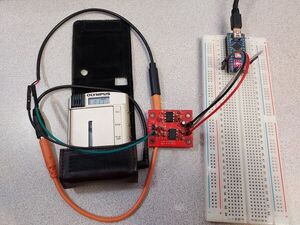
Storing data on a cassette using Arduino and Python (Differential Manchester encoding)
"I've been building a retro computer, and it's gotten me interested in using cassettes as data storage. This poses an interesting challenge where binary information has to be converted into something that can be written to, and reliably read from, a cassette. We have to worry about immunity to noise (tape hiss), speed fluctuations (wow/flutter), and amplitude fluctuations (dropout). Another limitation is frequency response. Our signal has to stay safely within the range of frequencies a tape can reproduce. This range can be as narrow as 400-4,000Hz for something like a microcassette." [...]
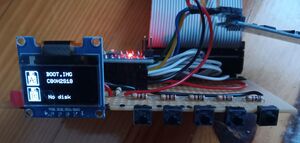
fddEMU
"An AVR (atmega328p) based floppy drive emulator for PC fddEMU is a DIY floppy drive emulator. You can immediately begin testing fddEMU on serial terminal with an arduino nano, an SD adapter that converts 5 volts arduino power supply and signals to 3.3 volts suitable for SD card, an SD card, and some jumper cables. Standalone (using without usb serial connection) require SSD1306 i2c screen, buttons and a 5 volts power supply. Requirements - Arduino nano (UNO will do but button inputs require ADC7, use serial commands instead) - Micro SD card adapter (converts 5 volts arduino power supply and signals to 3.3 volts) - A micro SD card (formatted FAT16/32, floppy images in root directory) - Two 1kOhm resistors (for step and readdata pins - atmega's internal pullups are not sufficicient for parasitic capacitance of long floppy drive cable) - Male to female jumper wires (for connecting arduino nano pins to FDC ribbon cable) - Male to male jumper wires (for pullup on step and readdata pins) Optional - 0.96" i2c OLED (SSD1306) screen (for output) - 5 1kOhm resistors (for making ADC buttons) - 1 100kOhm resistor (ADC7 has no pullup, so an external pullup required) - 5 push buttons (required for ADC input obviously) - 5 volts power supply (Computer PSU 5v pins or an external PSU can be used) - Female to female jumper wires (for connecting SD adapter to arduino nano) - Breadboard (for placing pullups and ADC buttons)" [...]

Closed Loop Analog Position Control using Brushed DC Motor and Potentiometer
"The project presented here is a low-cost position control closed-loop analog-servo using brushed DC motor and potentiometer as feedback. This project provides all necessary active functions for a closed-loop servo system using a Brushed DC Motor and potentiometer mounted on the output shaft of the DC Motor with Gear. The project is ideally suited for almost any servo positioning application. Can be used in applications such as side mirror movement control for cars, car head lamp beam control, animatronics, robotics, etc. The project requires a special mechanism, where the DC motor’s output shaft is mechanically couple with the potentiometer shaft using a reduction gear. Approx." [...]

Lighted 3D Moon Phase Clock
"In this Instructable, I will describe the design and build of a clock that shows the current phase of the moon in a lit 3D printed moon model. This project started this summer when I began to think about a project for my new 3D printer. I had printed accessories for the printer and chose a moon lamp (https://www.instructables.com/Moon-Lamp-With-Remote/) . I thought it would be nice if it could show the moon phases and saw in the comments someone else had the same thought. So I began thinking about a design and this is what I came up with. It was also an opportunity for myself to learn the basics of Fusion 360." [...]
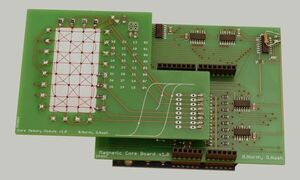
Magnetic core memory reborn
"Welcome! You have arrived at a website dedicated to the lost art of magnetic core memory manufacture. This site came about following our success building an Arduino-based magnetic core memory module. Building a core memory shield was a great learning experience and a lot of fun, so we thought it would be worth writing up some details for anyone else who might like to do something similar. As well as the report, we provide all the resources (EAGLE files, gerber files, parts list, etc.) necessary to build this Arduino shield." [...]
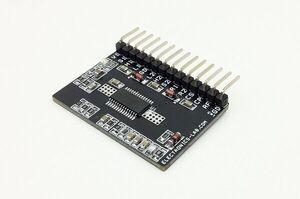
Phase-Shifted Full-Bridge PWM Controller Module – LM5046 Breakout Board
"This is a Phase-Shifted Full-Bridge PWM LM5046 carrier board that contains all of the features necessary to implement a phase-shifted full-bridge topology power converter. All inputs and outputs pins are accessible using the header connector. High efficiency DC-DC converter can be created using LM5046 carrier board + External H-Bridge and Transformer. Refer to the datasheet of LM5046 and schematic to configure the frequency, current feedback, delays, etc. " [...]

DIY Arduino Laser pointer Shooting Game
"You need to shoot as many targets as possible. You get one point and one more shot for each destroyed Target The object of the game is to shoot the LDR (target) under the active LED with a light beam from a laser pointer. This time I will show you how to make a simple but addictive game for one or more players. The game consists of the following: We have five blue LEDs that light at random order and intervals. Under each LED is a photoresistor that is actually a target. The object of the game is to shoot the LDR (target) under the active LED with a light beam from a laser pointer." [...]

Retro Arduino Radio
"I love the look of old 1920's radios. They are the embodiment of a decade. The radios that I like the most were vacuumtube cathedral radios made by Philco. When I think of old-timey radios those are the first thing that pops into my mind. So, I decided to make one using an old Arduino that I had just laying around. I'm very happy with the final product and hope that you find some enjoyment from this post." [...]
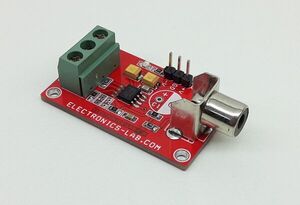
Balanced Line Receiver for Digital Signal Over Twisted Pair CAT-5 Cable
"The circuit presented here is a high-frequency differential line receiver amplifier that has excellent common-mode rejection at its inputs. The project is an ideal solution for a receiver of a digital signal or video signals that are transmitted over long distances on twisted-pair cables like CAT5. Category 5 cables are very common in office settings and are extensively used for data transmission. These cables can also be used for the digital signal or analog transmission of signals such as video. These long cables pick up noise from the environment they pass through. This noise does not favor one conductor over another and therefore is a common-mode signal." [...]

IOT based Home Automation Project
"How to make IOT based Home Appliance Control using Blynk Server | IOT based Home Automation Project" [...]
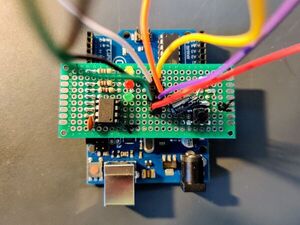
Attinyuino - an Arduino UNO Hat for the Attiny85
"A way to program and live-prototype with your Attiny85 with one board, without having to move the chip around. Introduction What's it all about? Well, I was doing some programming and prototyping with the Attiny85 for my other project and figured out, that doing it all on a breadboard is rather tedious, compared to using a dedicated Arduino board. I had to build a programming breadboard (connected to Arduino UNO configured as a programmer), build my prototype and move the Attiny back and forth between the 2 boards to test various iterations of my software. So I decided to make a little more efficient solution to help myself with further projects. And thus a little board was born." [...]

Light Deck - MIDI Lightroom Controller
"Light Deck is an open-source MIDI Lightroom controller. Source code, PCB schematics ad 3D case files are all available and fully customizable. - Speed up your photo editing - All the basic and advanced Lightroom controls - Never use the mouse when all you need is just light and quick photo editing - Super esay to install and use Features - All the controls from the basics tab are available - Copy and paste settings between photos - Controls for the HSL tab are available (Sat, Lum, Hue profiles) - Basic Transformation, Correction and Details controls are available - Buttons to navigate between photos and to export - Of course undo and redo button are present too ( who does not make mistakes?) The project would not have been possible if there had not been two major open source projects, in particular the plugin MIDI2Lr. The second project is the Control Surface Arduino library which made writing the code extremely simple (as you will see, very few lines of code were enough). The idea of the project is to create an cheap version of Lightroom controllers that are on the market and to allow everyone to speed up photo editing by minimizing the use of the mouse and keyboard." [...]

Microbit Function Generator
"A Function generator producing sine, sawtooth and pulses up to 1MHz using a Microbit, custom PCB and 3d printed box. This project is an enhancement to an earlier project previously published: Microbit Pulse Generator - Variable Ranges The enhancements are a custom designed PCB to carry out the D2A conversion for the Sine and Sawtooth waveforms complete with independent outputs and independent amplitude control. With the addition of an OLED display to indicate range, frequency and output status. All housed in a custom 3D printed enclosure. Digital waveforms A digital sinewave waveform can be generated using shift resisters with weighted outputs. Using two 4 bit shift registers we can generate 8 discrete up steps and 8 discrete down steps for symmetry." [...]

Mini Oscilloscope using ATmega328p
"It's a handy little gadget that draws charts automatically using signals you feed into it from the probes hooked up to an electronic circuit. Overview You've almost certainly drawn charts in school. Many of them show how a certain quantity of something (like a heart rate, the price of a corporation's shares, or a country's exchange rate) changes over time. They have the quantity plotted in the vertical direction (known as the y-axis) and the time period plotted in the horizontal direction (the x-axis).The trouble with charts like this is that they can take ages to plot—unless, of course, you happen to be an oscilloscope! " [...]

M5Stack Smart Plant Watering
"Using M5Stack to water a plant and report soil moisture, humidity and temperature. Supports Home Assistant and its MQTT Discovery. Features - Collects soil moisture, air humidity, temperature and pressure - Button push (A) for watering - Reuses configued Wifi connection - Publishes Home Assistant state - Support Home Assistant auto-discovery - Reconnect to Wifi with a button (B) - Send manual MQTT configuration and state with a button (C) - Signal lack of water with RGB bar (on M5Stack Fire) and warning image" [...]

esp32-dali-clock
"This is an ESP32 recreation of the "Dali" digital clock where the digits "melt" into one another. Watch a full demonstration on YouTube The Dali clock was first written in 1979 by Steve Capps for the Xerox Alto and later ported to the Macintosh (see xdaliclock for the full history, including a link to a super trippy film from the 1974s that inspired this whole madness). Later, Jamie Zawinski re-implemented an X Windows version called xdaliclock. I began with the ".xbm" font files from Jamie's work, but my implementation does not share any code with that version. This project is a follow up to my earlier project, the arduino-dali-clock, but instead of driving a TFT panel, it generates composite video output for any NTSC or PAL television or monitor. Putting it together is ridiculously simple, requiring only two wires." [...]

Handheld Thermocouple Thermometer
"Handheld thermometer for measuring high temperatures. Since I'm a pizza lover and I got a wood oven, I built this thermometer for checking internal oven temperature and compare the reading with the analogue one mounted on the oven This Handheld Thermometer uses a K-type Thermocouple. You can read from 0°C up to 1023.75°C depending on the used thermocouple (most thermocouple reads from 0 t 400°C). You cannot read negative temperatures. Microcontroller used is an ATtiny85 on the Digistump Digispark. Thermocouple is connected through a MAX6675 amplifier." [...]

POV (Persistence of Vision) – Open-Source Arduino Nano Hardware
"This is an easy and simple hardware to create a POV display. The hardware consists of a Hall sensor, Arduino Nano, 17 x 5mm LEDS of various colors, etc. The Hall Sensor is connected to analog pin A5 with a pull-up resistor. The circuit works with 3.7V to 5V DC and a 3.7V battery is ideal to use. The user may use as many LEDS as required. This project can also be used to create many applications such as Bar-Graph display, LED light effects." [...]

Wheels4Water : Let's paddle away through water mgmt issues
"Are we neglecting the importance of water? Probably, the answer is YES. Go through this different and versatile project to find a solution. Before diving into the Hardware & Software setup, it is important to first understand what the project is intended to do? Way before starting my IoT & Robotics journey I always wanted to solve the problem of overflowing water tanks. So, after understanding what do Internet of Things & Machine Learning means I thought of making a project which will eliminate this traditional problem to the full extent." [...]

4-Channel Remote Receiver Using NRF24L01 Radio Module – Arduino Compatible
"Controlling 4 devices using an RF remote is very easy with this project. This is an Arduino compatible project. NRF24L01 module, Atmega328 microcontroller, 3.3V regulator, and few other components are part of the project. Onboard power LED and an additional functional LED is provided. The project provides 4x TTL outputs that can be interfaced with a relay board, solid-state relay boards, motor drivers, and other projects. The circuit works with 5V DC and requires a few milliamps current." [...]

IoT based Air Quality Index Monitoring System
"This small circuit board helps AQI Monitoring through an interactive dashboard showing data of Ozone, CO2, Temperature and Humidity. Life is very precious and we have only one chance to live it. In daily life routine, we do many activities like sleeping, eating, washing hands, using a mobile phone, going to the bathroom, doing work, assignments (Arrrghh!) and breathing. Yes!!! Breathing, the most important activity that we do every day, every hour, every minute, and even every moment." [...]

Signal Conditioner for Sensorless BLDC Operations
"This is a back EMF signal conditioning circuit that can be used to develop high-voltage sensorless motor drivers. When a sensorless algorithm is used to control the BLDC motor speed, the Back EMF (BEMF) signals are used. Based on zero crossing of BEMF signals, motor commutation is decided in the firmware. The signal conditioning circuit has mainly three blocks: the first is a low-pass filter for each phase voltage the second is a comparator circuit for determining the zero crosspoints and the third is a high-speed optocoupler. The optocoupler provides isolation between high-voltage motor driver circuitry and microcontroller. Inputs - 3 Phase Signal inputs, from 3 Phase Motor connections - Current Feedback across the shunt resistor of IPM/IGBT Emitter - DC Bus Monitor, Over Voltage protection, 200V DC or 400V DC Outputs - 3 Phase Digital Zero Cross Signals (Optically Isolated) - DC Bus Over Voltage, Normally High Output (Optically Isolated) - Current to Voltage Cycle by Cycle Output (Optically Isolated) - Optional Trip Optocoupler (Not Install, can be used, If current feedback circuit is not required) Features - Supply 5V DC for Analog Side (Inputs) - Supply 5V DC For Digital Side (Outputs) - Detect the Back EMF of 3 Phase Motor and Provides 3 TTL Outputs - DC Bus Voltage Feedback Low or High TTL Output - Optional Current Sense Circuit provides Cycle by Cycle voltage output proportional to motor current - All outputs are optically Isolated, Frequency up to 20Khz - Jumper J1 – Overvoltage protection, 200V or 400V DC (Close the Jumper for 400V) - The project requires 2 separate 5V DC power supplies, Analog-Input side, and digital-Output side - PCB dimensions: 47.94 x 42.70 mm BLDC Motor Winding and Back EMF To run a BLDC motor without sensors, it is important to sense the rotor magnet position with reference to the windings on the stator." [...]

Elevator with Arduino
"You'll learn how to create your own elevator with Arduino. Why Develop an Elevator with Arduino? In many places, elevators are used to allow users of a building to move between different floors. Elevators are devices that work with a high level of safety through the use of several sensors in their structure. In addition to being used to transport people, several places use elevators as a platform for cargo handling in construction sites, restaurants, reception of product delivery, and much more. Learning how to build your own elevator will help you understand: How does an elevator work What are the sensing elements to use in an elevator?" [...]
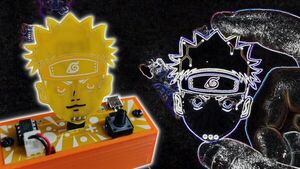
Naruto Themed Night Lamp
"Made a Naruto themed night lamp-based around ATtiny13A MCU and custom PCB. Here's something cool, a Naruto-themed Desk light that is made mainly from PCB. The heart of this project is an Attiy13A that drives some 0603 LEDs which are on the backside of the Face. The Head part is detachable or swappable, which means we can prepare two or more Naruto Heads and add different color LEDs on the backside, then we can swap them for whatever light color we need. I've modeled Naruto's face in my PCBCad software and then send it to PCBway for samples. After receiving the PCBs, I assembled the whole board and then added code to it and that is pretty much how I made this project." [...]

A Big Self-Setting Clock
"Use an ESP32, an RTC, and a flexible LED Matrix panel to build this large clock that gets NTP time from the Internet. I've built several clocks. I like the ones that connect to the Internet and set themselves. This one should be educational since it combines a bunch of different technologies to produce an very interesting clock. First, we are using an ESP32 processor which comes with built-in WiFi and a lot of powerful features. With its WiFi capabilities, we get NTP or Epoch time from the Internet and use it to configure a DS3231 RTC (real time clock) module." [...]

Micro Weather Station
"A micro weather station that shows date, time, temperature and 3 day weather forecast. Floating around sites like Banggood is a AU $20 ESP8266 Weather Station Kit. The software it uses is actually designed by ThingPulse and the source is freely available for download from GitHub. Rather than purchase a kit, all you need is a ESP8266 module and 0.96in OLED screen with a I2C interface. In my build, I chose a ESP01 module and a Blue/Yellow 0.96in OLED screen. " [...]
Secção Videos
Videos interessantes.
That's all Folks!




